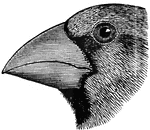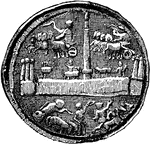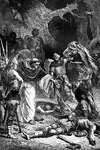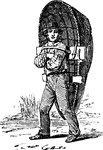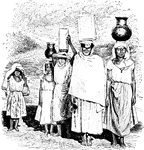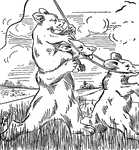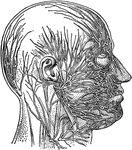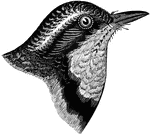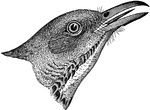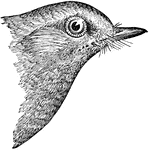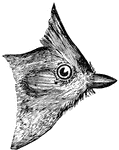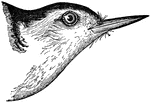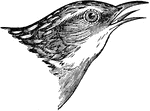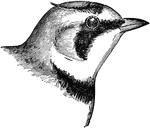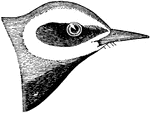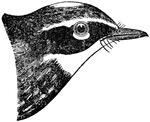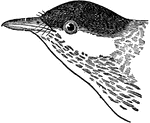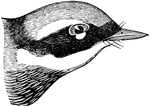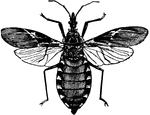
Blood Sucking Conenose
The body is somewhat flattened, and the sides of the abdomen are strongly recurved. The head long, narrow,…
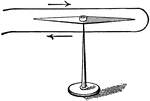
Needle, compass
"Bring the two ends of the wire into contact, and thus close the circuit. The needle instantly flies…

Voltaic cell
"Just as a head of water supplies a hydraulic pressure that causes the liquid to flow through a pipe…

Blake transmitter
"The transmitter is a microphone adapted for the transmission of telephone messages and, in general…

Carriole and Pony
"The carrioles are little carts not unlike our American sulkies, save that each carriole has a seat…
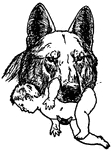
Mowgli's Brothers
"Is that a man's cub?" said Mother wolf. "Bring it here," Father wolf's jaws closed on the child's back.…
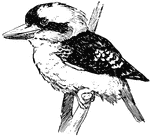
Kookaburra
"He is a kingfisher, with a head as big as his body but a voice that is many times bigger than both…
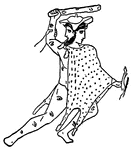
Argus
"Now Argus had a hundred eyes in his head, and never went to sleep with more than two at a time, so…
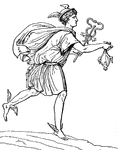
Mercury (Hermes)
"Mercury made haste, put his winged slippers on his feet, and cap on his head, took his sleep-producing…

Edward Lear's Rhymes
There was an old person of Dover, who rushed through a field of blue clover; But some very large bees…

Coypu
A rodent of South America. Its head is large and depressed, its neck short and stout, its limbs short,…
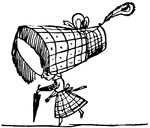
Edward Lear
A scene from the nursery rhyme, The Nonsense of Edward Lear. There was a young lady of Dorking,…
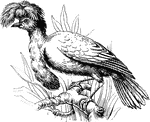
Umbrellabird
"The Umbrella Bird is a native of Peru. It is about the size of a crow, with deep black plumage; the…
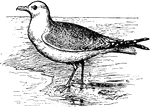
Gull
Gulls are in general medium to large birds, typically grey or white, often with black markings on the…

Petrel
Petrels have a fossil record that extends back at least 60 million years, it is among the oldest bird…
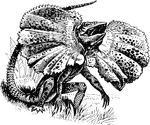
Frilled Lizard
The Frilled Lizard is so called because of the large ruff of skin which usually lies folded back against…

Kidney
Two glands having the function of secreting urine from the system, situated at the back of the abdominal…
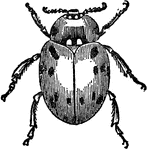
Ladybird
A class of small insects or beetles found commonly on plants and trees. They are noted for their various…

Centaur
"These monsters were represented as men from the head to the loins, while the remainder of the body…

Gryphon
"The griffin is a monster with the body of a lion, the head and wings of an eagle, and back covered…
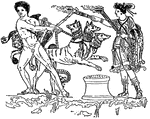
Hercules and Cerberus
"Hercules descended into Hades, accompanied by Mercury and Minerva. He obtained permission from Pluto…
Muscles of the forearm
"The extensor muscles on the back of the forearm. Note the tendons at the wrist." —Davison, 1910

Lemming
A rodent quadruped found in the northern parts of America and Eurasia, particularly in Norway and Sweden.…

Leopard
Leopards range in size from 1 to almost 2 metres long, and weigh between 30 and 70 kg. Most leopards…
Ling
A species of sea-fish found in the northern seas as far north as Iceland. It is allied to the cod family.…

Ear
Interior of the ear. There is external to the head a wide-mouthed tube, or ear-trumpet (a), for catching…

Cow Skeleton
Skeleton of the cow. 1: Frontal bone of the head. 2: Upper jaw, superior maxillary. 3: Lower jaw, inferior…
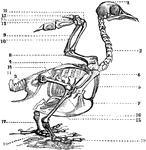
Bird Skeleton
Skeleton of a bird. 1: The head. 2: Cervical Vertebrae. 3: Dorsal and lumbar vertebrae. 4: Scapula.…

Insect
Diagram of the external structure of an insect. 1: The head carrying the eyes and antennae. 2: First…
